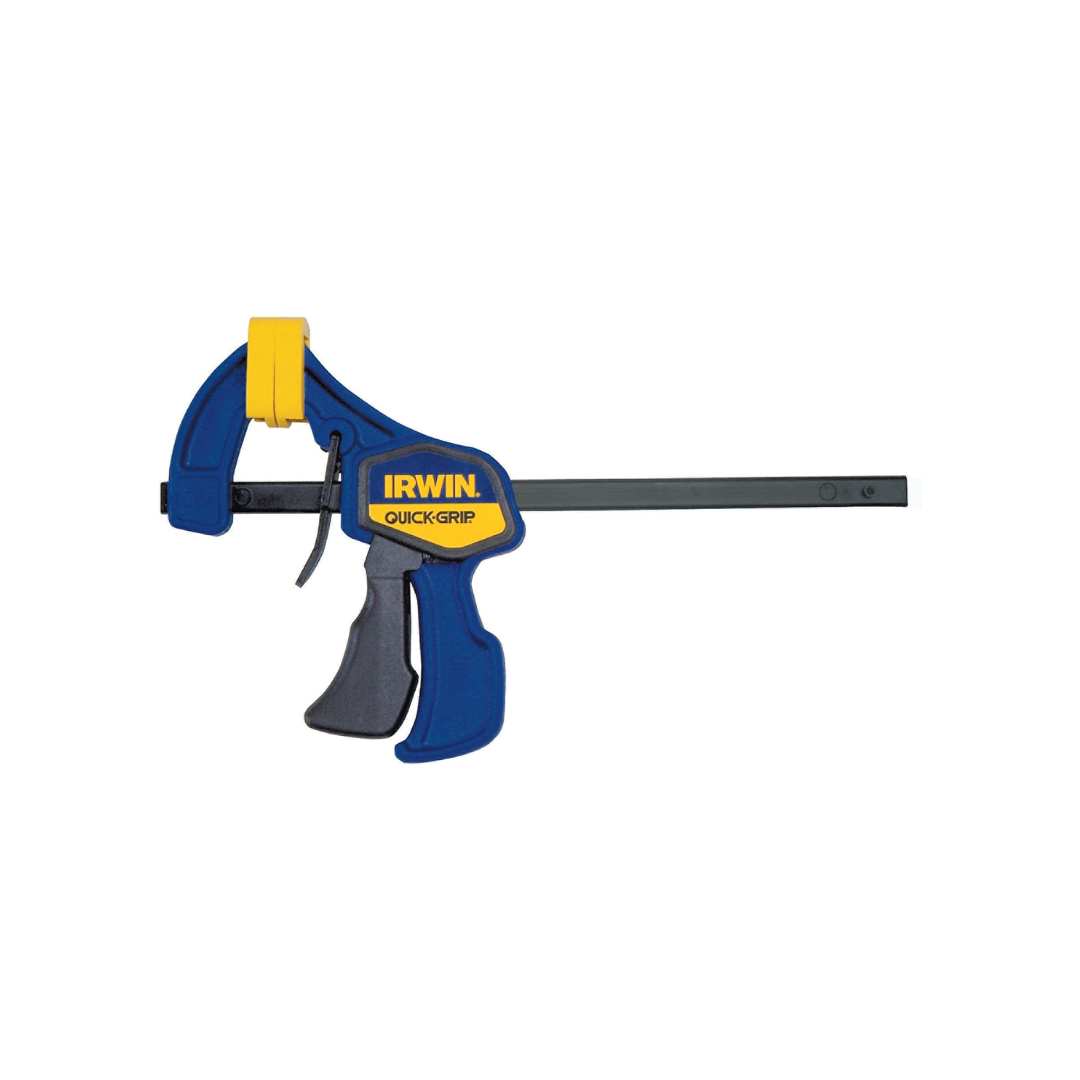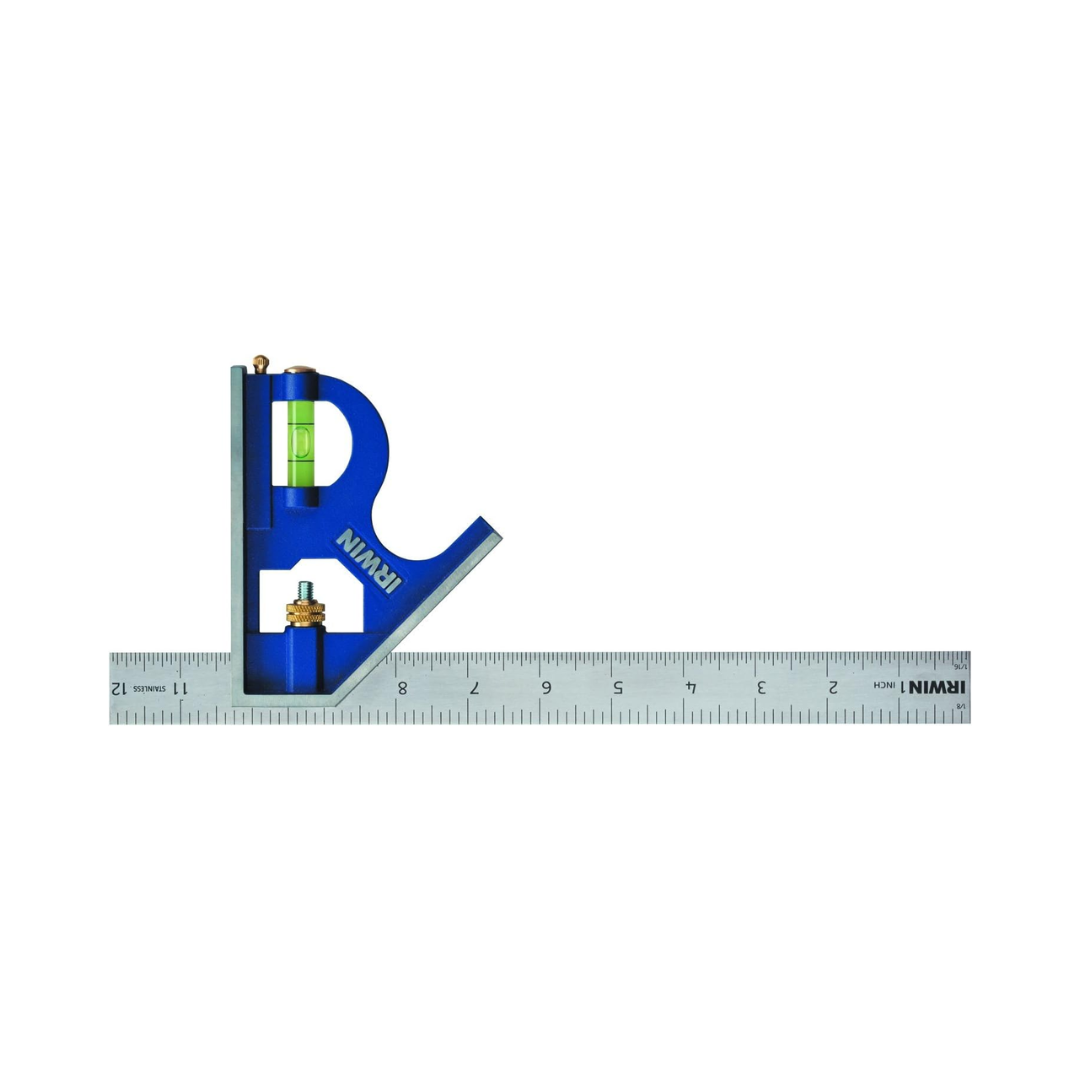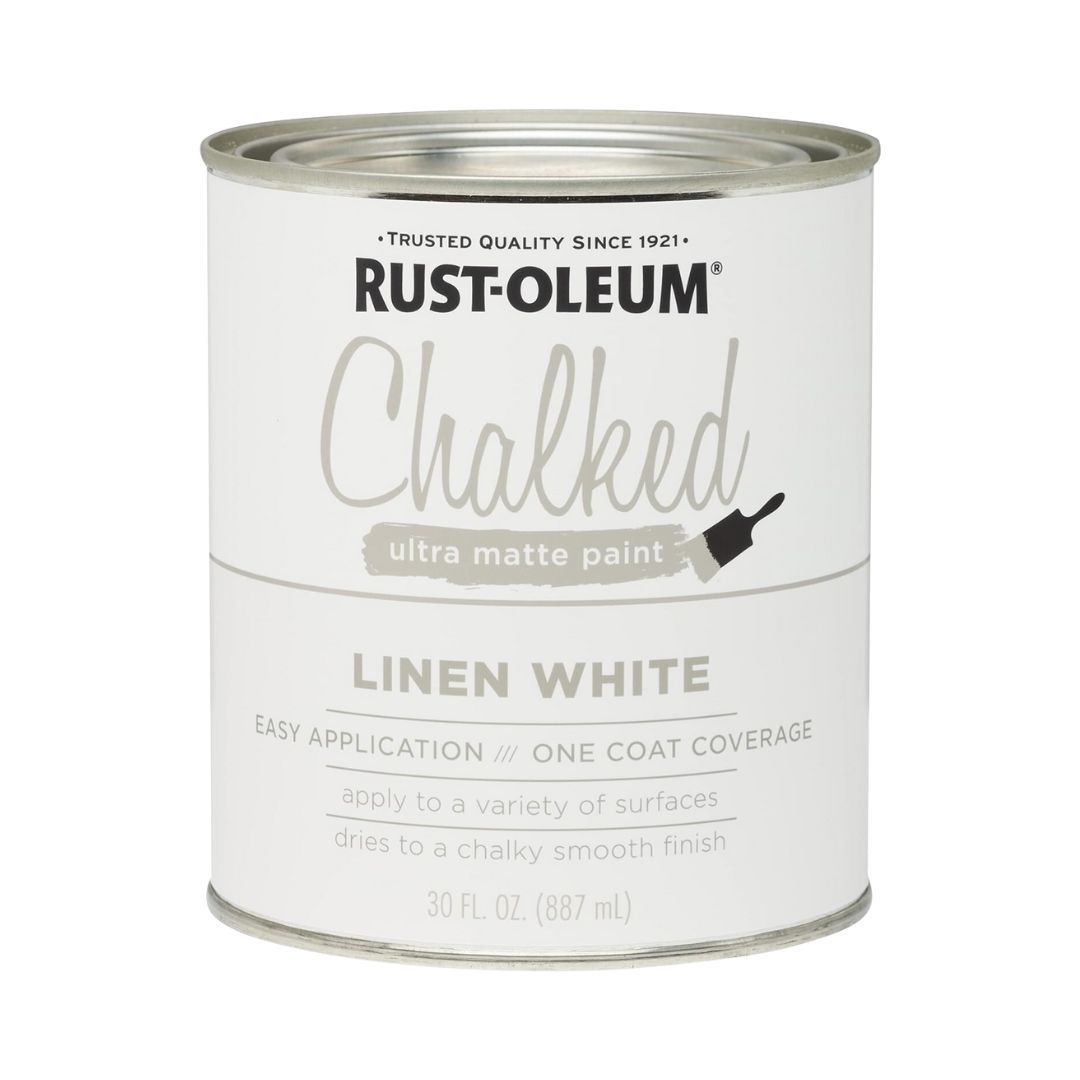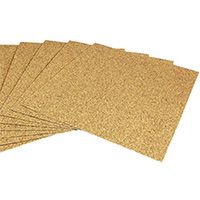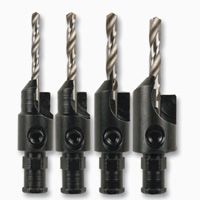We may be compensated if you purchase through links on our website. Our team is committed to delivering honest, objective, and independent reviews on home products and services.
A garage pergola can transform a plain, utilitarian entrance into an eye-catching architectural feature. This decorative structure adds dimension and visual interest to improve your home’s curb appeal. With some basic carpentry skills and a free weekend, you can build and install a pergola above your garage door. In the video above, This Old House senior technical editor Mark Powers demonstrates how to construct and mount this attractive addition to your home’s exterior.
Planning Your Garage Pergola
Start by measuring the span of your garage door, including the casing. This measurement will determine the length of your rafters. As a general rule, the rafters should extend about a foot past the brackets on each side—12-foot rafters work well for a standard one-car garage. If your garage is larger, you might need longer rafters for good coverage and aesthetics.
Consider the following factors when planning your pergola:
- The depth you want the pergola to project from the garage: Consider how far you want the pergola to extend from the garage. This will influence both the visual impact and the amount of shade or shelter the structure provides.
- The overall width of your garage door opening: Ensure that the pergola’s design complements the width of your garage door, framing the entrance without overwhelming the space. This will help create a balanced look that enhances your home’s curb appeal.
- The style of your home’s existing exterior trim: Match the pergola’s design with the architectural style and trim of your home for a cohesive look. This could involve selecting similar materials, colors, or design elements. Think about any future plans for your home that might impact the pergola, such as painting or installing new trim.
- The type of wood: Choose a durable wood that can withstand outdoor elements. This will help reduce maintenance needs and protect against rot and insect damage. Pressure-treated lumber is a good choice for outdoor structures.
Preparing the Garage Pergola Components
Here are some key components you’ll need:
- Pressure-treated 2×4 boards for rafters
- Pressure-treated 2×2 balusters for purlins
- Pre-made decorative brackets
- Exterior-grade screws and fasteners
- Solid color exterior stain
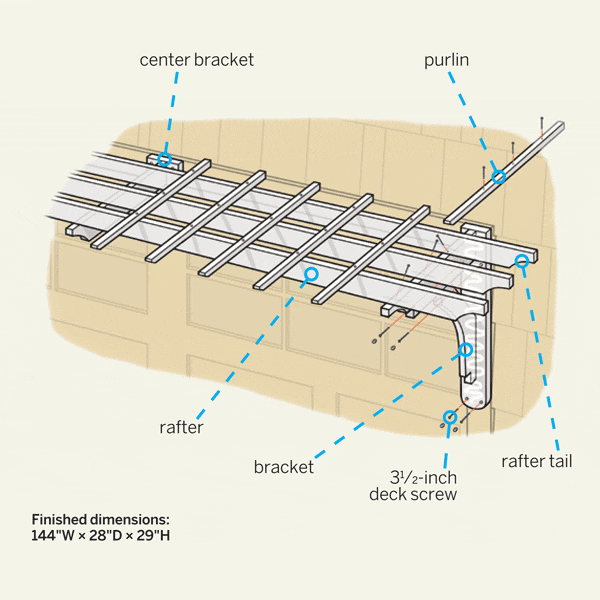
After you’ve gathered your materials, it’s time to start shaping the individual pieces of your pergola.
Designing the Rafter Tail
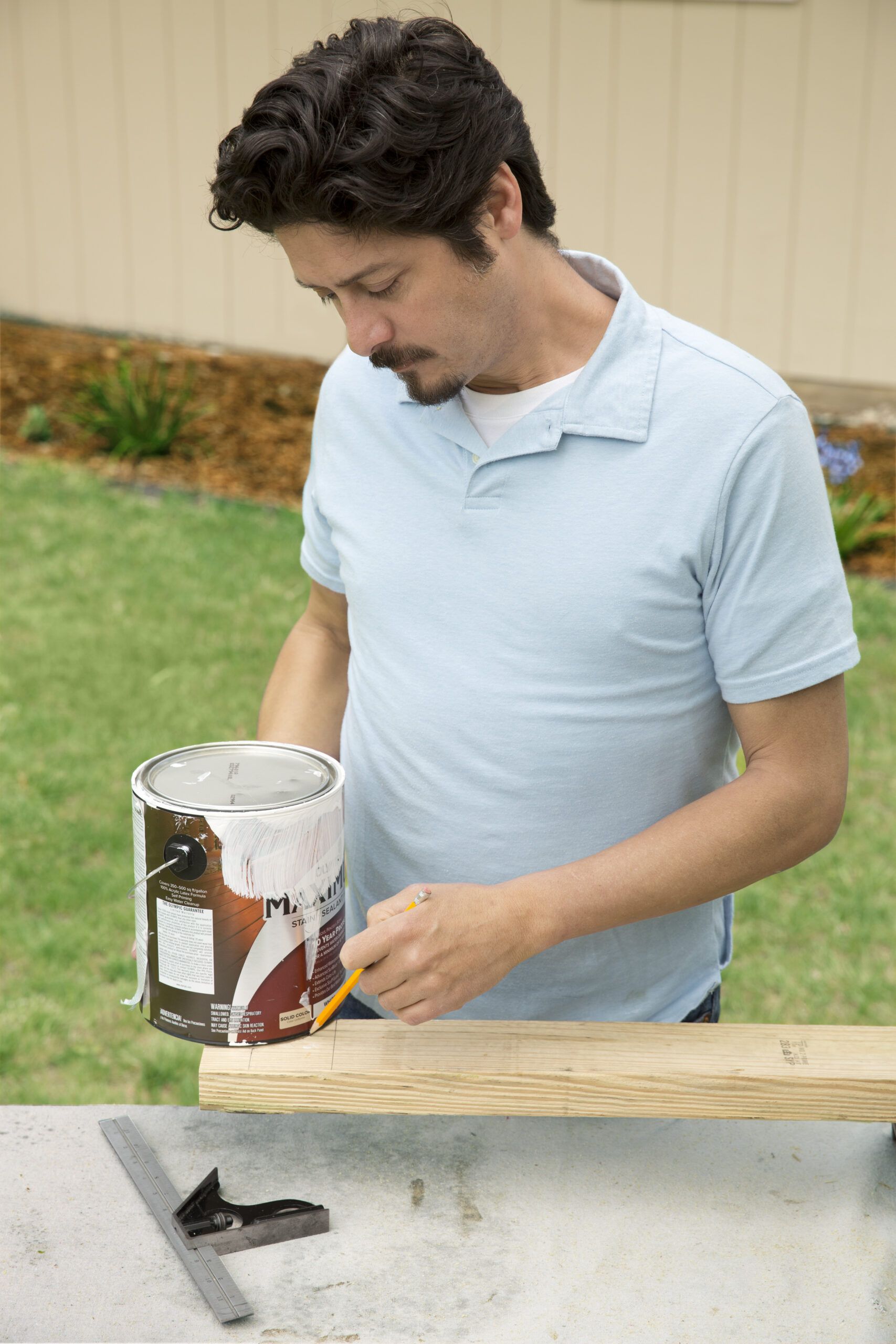
Clamp a 2×4 to your work surface. Use a combination square to measure and mark lines across the board 1 and 4 inches from its end. On the 1-inch line, make a tick mark 1-and-1/2 inches from the top edge of the rafter.
Position a 1-gallon paint can so that its arc connects the tick mark and the point where the 4-inch line meets the rafter’s bottom edge. Trace along the can to create the curved detail on your rafter tail.
Cutting the Tails

Follow the line with a jigsaw to shape the tail, then use the piece as a template to trace the detail onto the uncut ends of the other boards. Cut the marked tails and use one of them to mark and shape the uncut end of the template board. Sand the curved cuts lightly with 120-grit paper.
Preparing the Purlins
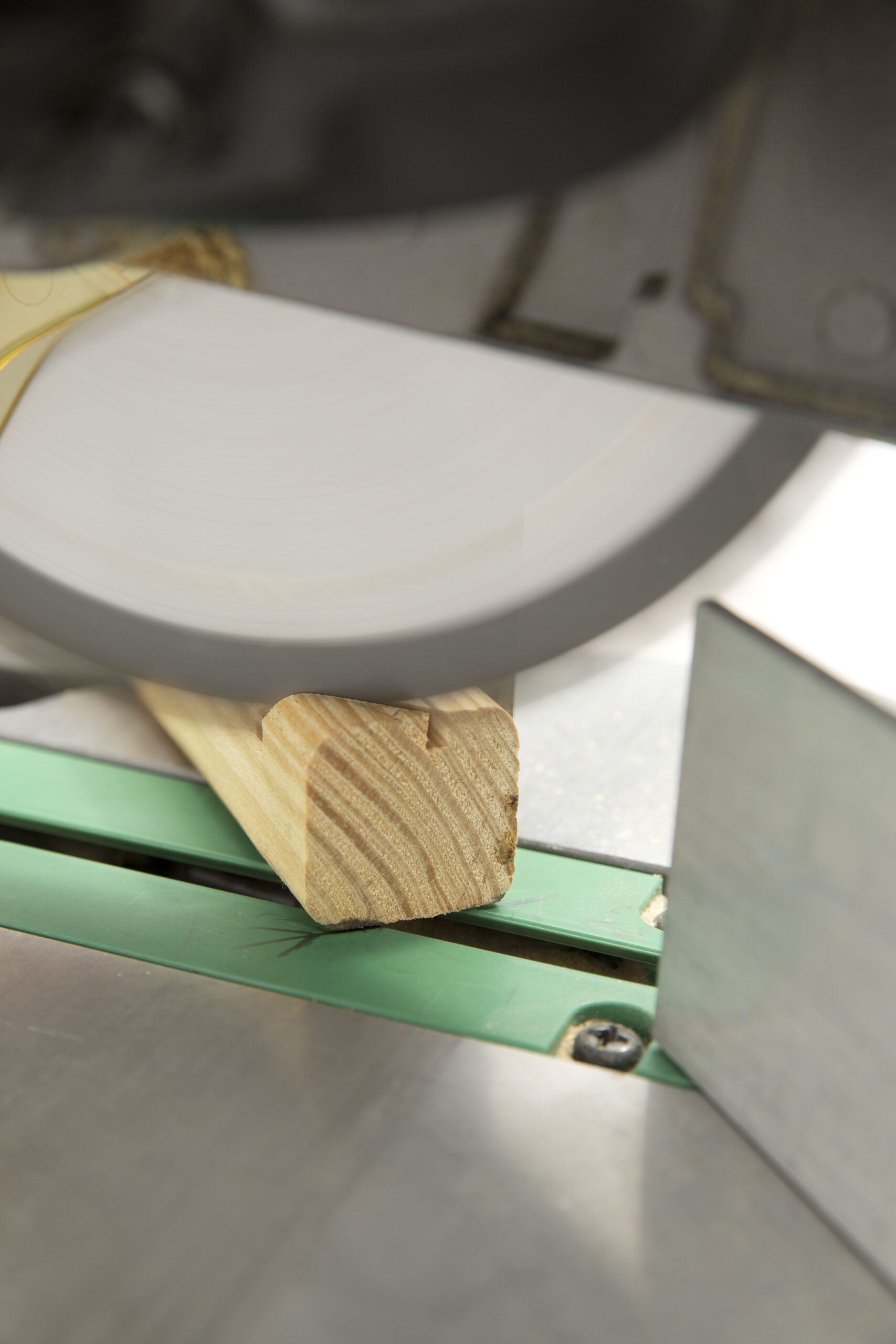
Cut your 2×2 purlins to length. Ours were 28 inches to overhang the 24-inch brackets by 4 inches. Mark a 45-degree line across one corner of each purlin, about 1/2-inch from the top edge. Set your miter saw blade to 45 degrees and cut off the marked corners. Sand all cut edges smooth.
The purlins should be consistent in size and shape to provide a uniform look. These smaller beams will sit perpendicular to your rafters and are crucial for the structural integrity and style of the pergola.
Staining and Finishing the Pergola Components

Applying a protective finish helps your pergola stand up to the elements and last longer.
Lightly sand all components, including the pre-made brackets, with 120-grit sandpaper. Apply a thin coat of solid color exterior stain to all surfaces using an angled sash brush. Allow the first coat to dry completely, then apply a second coat for better protection. Let the stain cure according to the manufacturer’s instructions before proceeding with installation.
Installing the Brackets Around Your Garage Door
With your pieces stained and finished, you can now install the brackets on the side of your garage door. This step requires precision and, ideally, an extra set of hands. Improperly installed brackets could compromise your pergola’s stability.
Laying Out the Holes
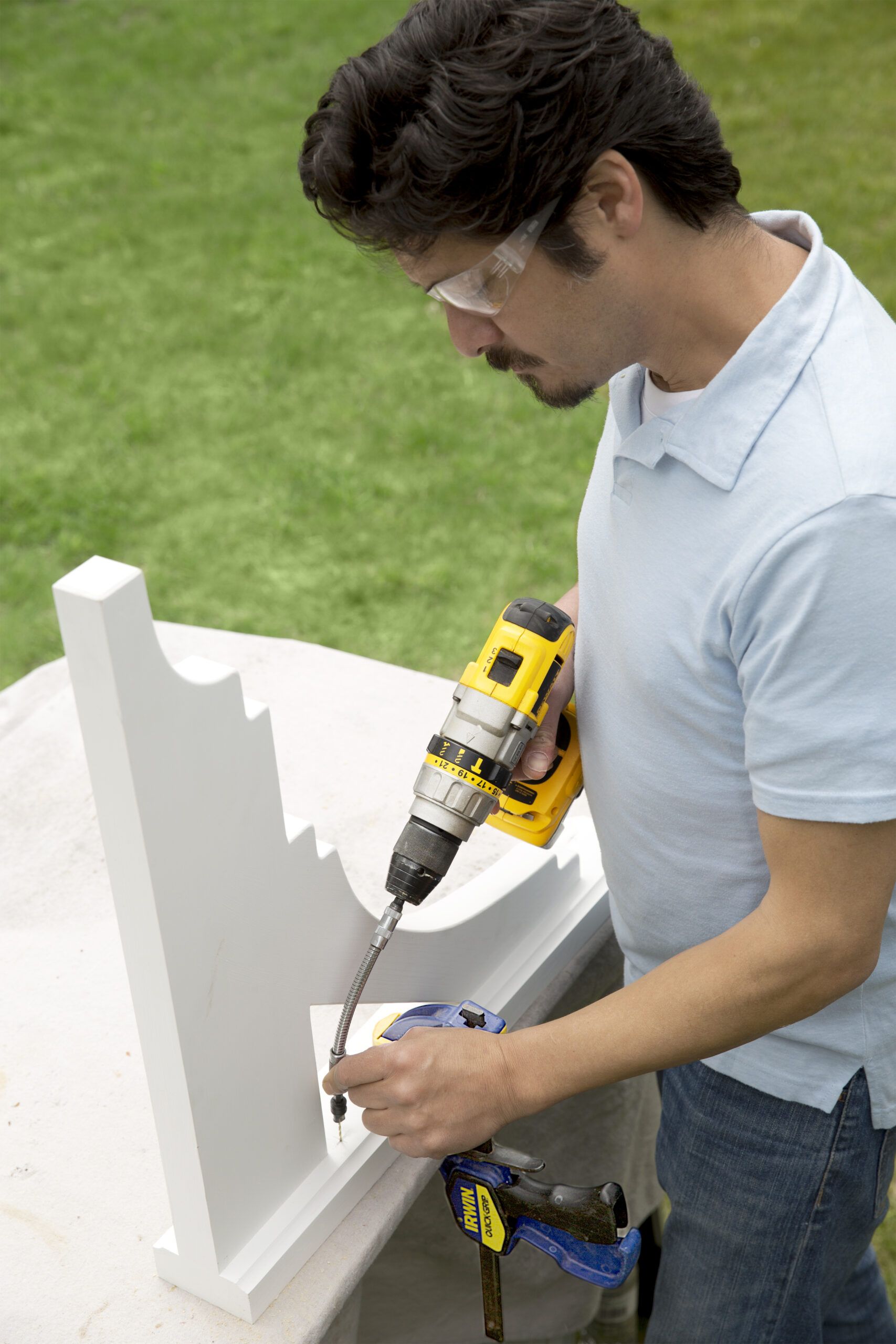
Mark locations for pilot holes on each bracket, ensuring they’re at least 1/2-inch from the edges. Use a drill with a combination countersink bit to bore holes near the top and bottom of each bracket. Measure and mark the midpoint of the head casing above your garage door for the center support.
Anchoring the Brackets
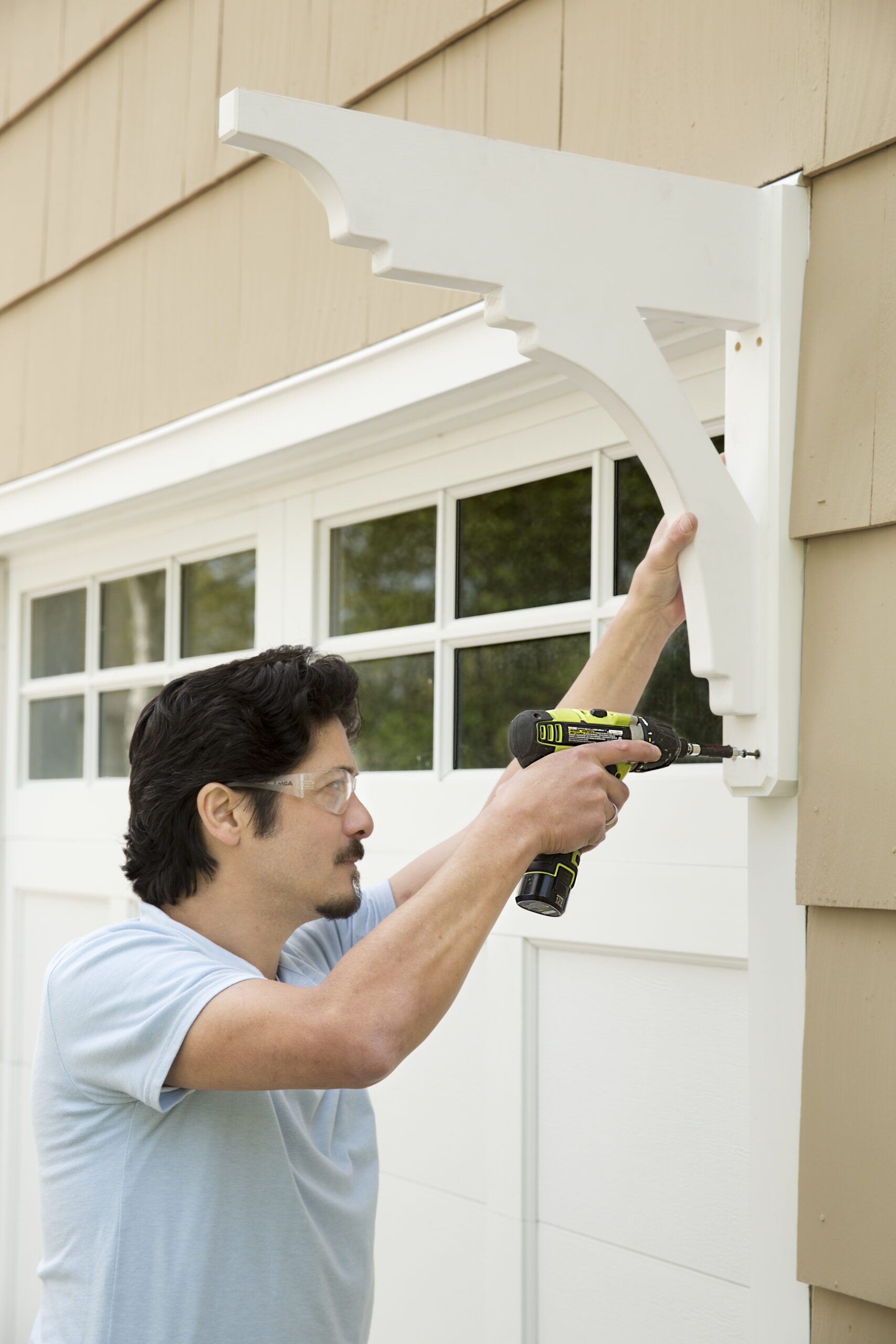
Apply a bead of caulk to the back of each bracket before positioning. Secure each bracket to the garage door casing with 3-and-1/2-inch deck screws, ensuring they’re plumb. Careful measurement and installation of the brackets ensure that your pergola is level and secure. It’s helpful to have a second pair of hands to hold the brackets steady while you drill and fasten them.
Plumbing the Brackets
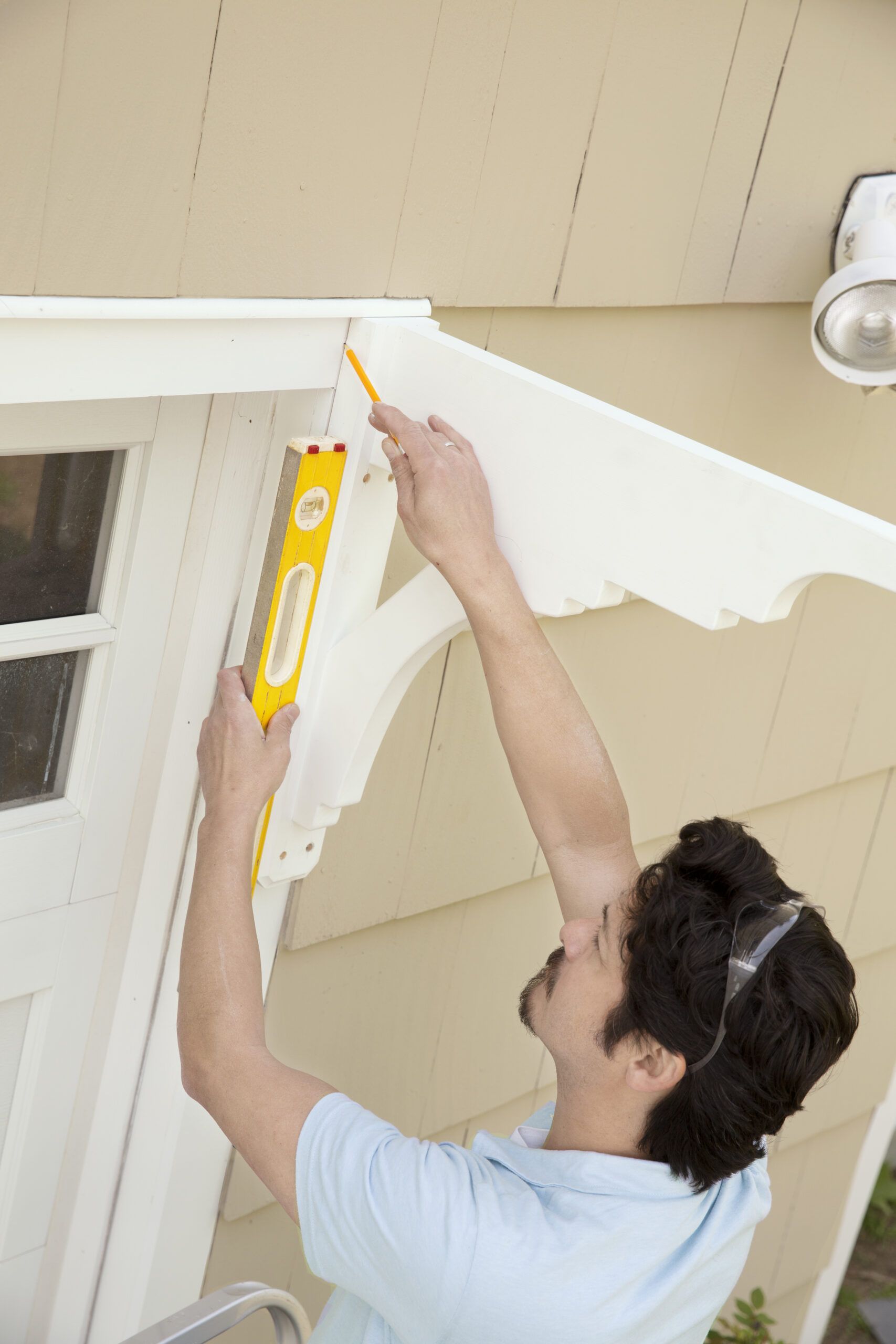
Use a level to plumb the bracket, then draw a reference line on the head casing. Holding the bracket plumb at the line, drill pilot holes through the three open countersinks. Secure the bracket with three more 3-and-1/2-inch deck screws. Squirt a dab of caulk into each screw hole and cap them with 3/8-inch wood plugs to conceal the fasteners. Then, install the other two brackets.
Assembling and Mounting the Garage Door Pergola
With all components prepared and brackets in place, you’re ready to assemble and install your pergola.
Positioning the Rafters
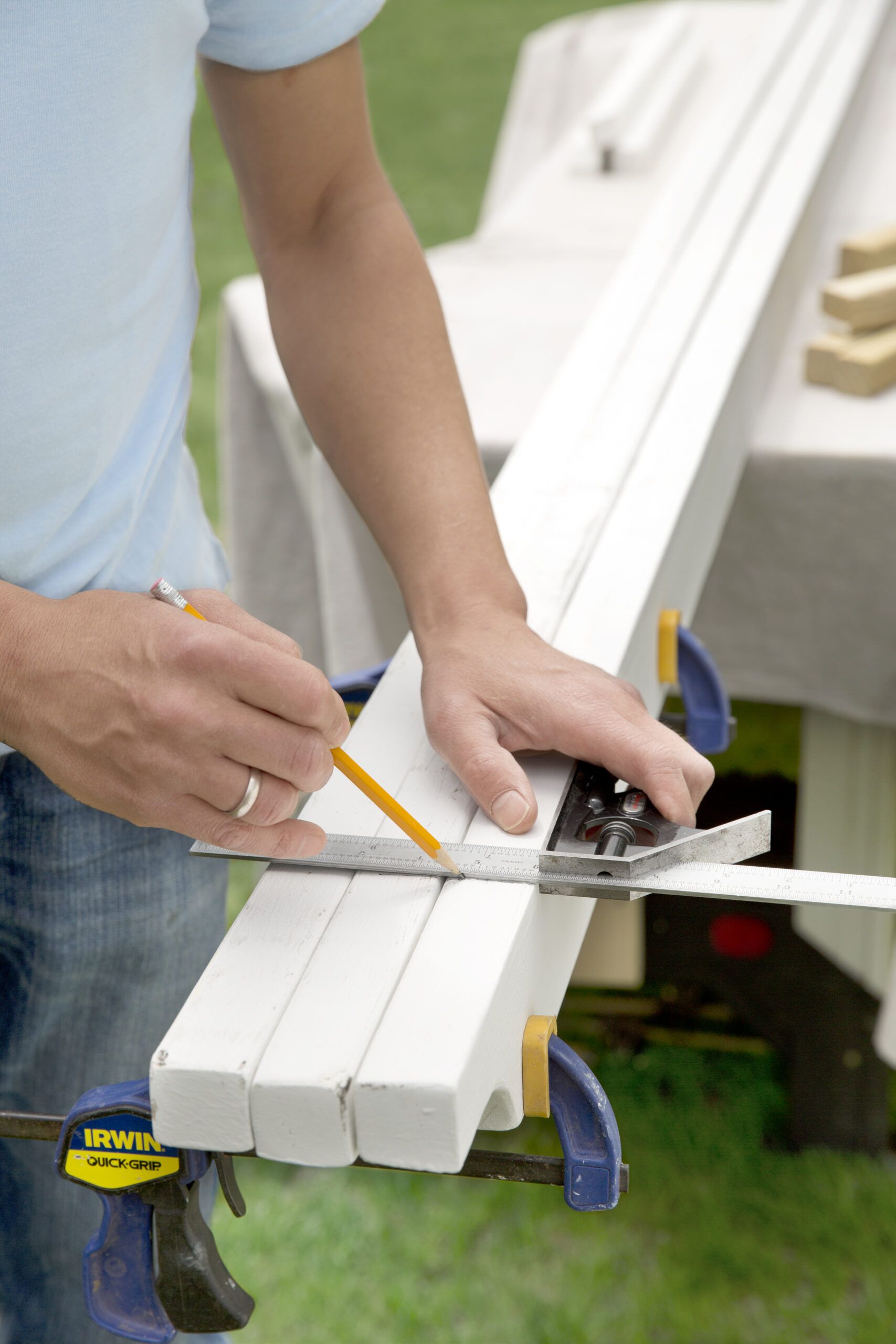
Arrange your rafters on edge and flush them up at both ends. Mark lines across the top of the rafters 6 inches from each end to indicate half the overhang.
Clamping the Assembly
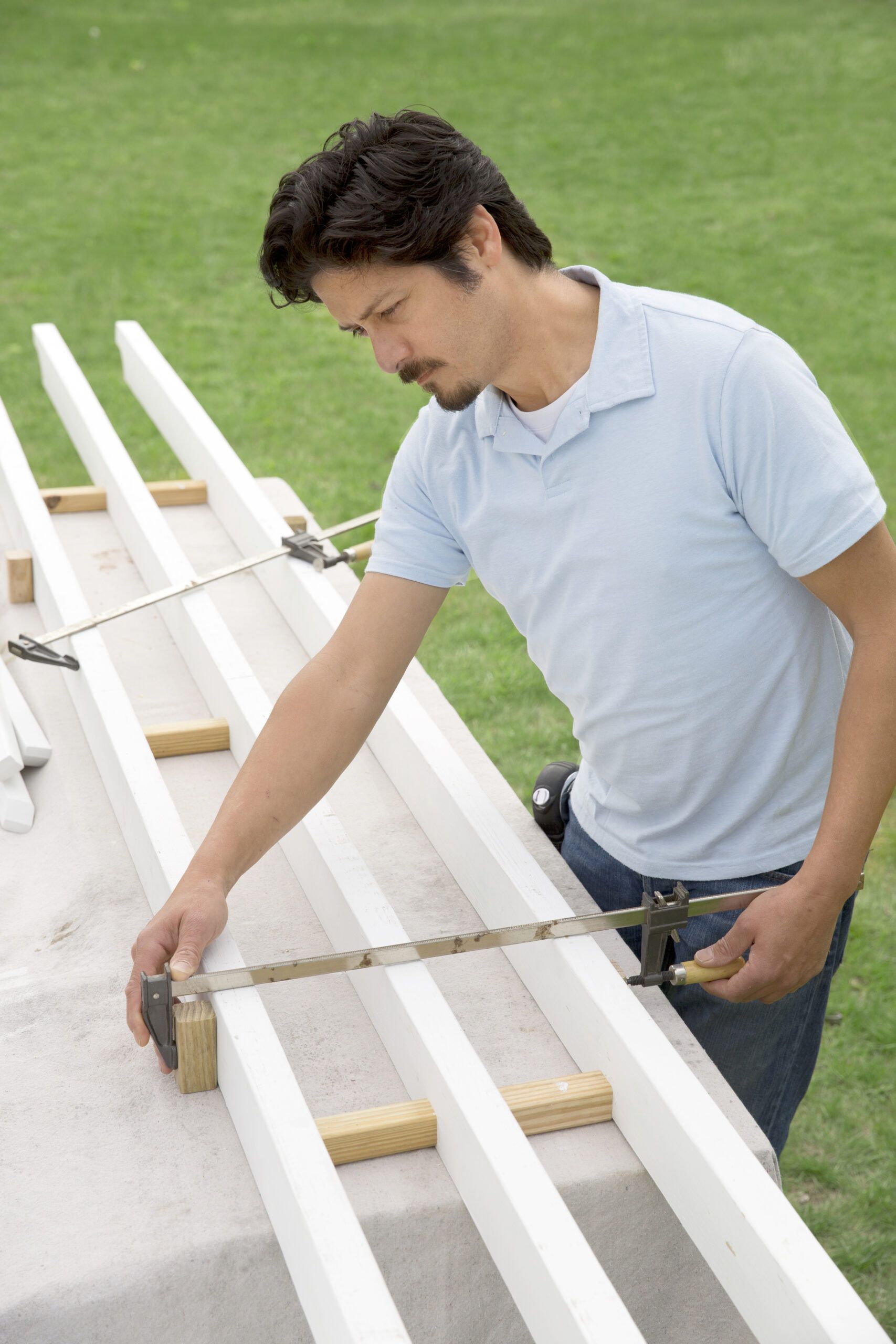
Calculate the spacing between rafters by subtracting their total thickness from the bracket depth and dividing by four. Cut spacer blocks to this length and use them to position the rafters evenly. Clamp the assembly together, using scrap wood to protect the stained surfaces.
Attaching the Purlins
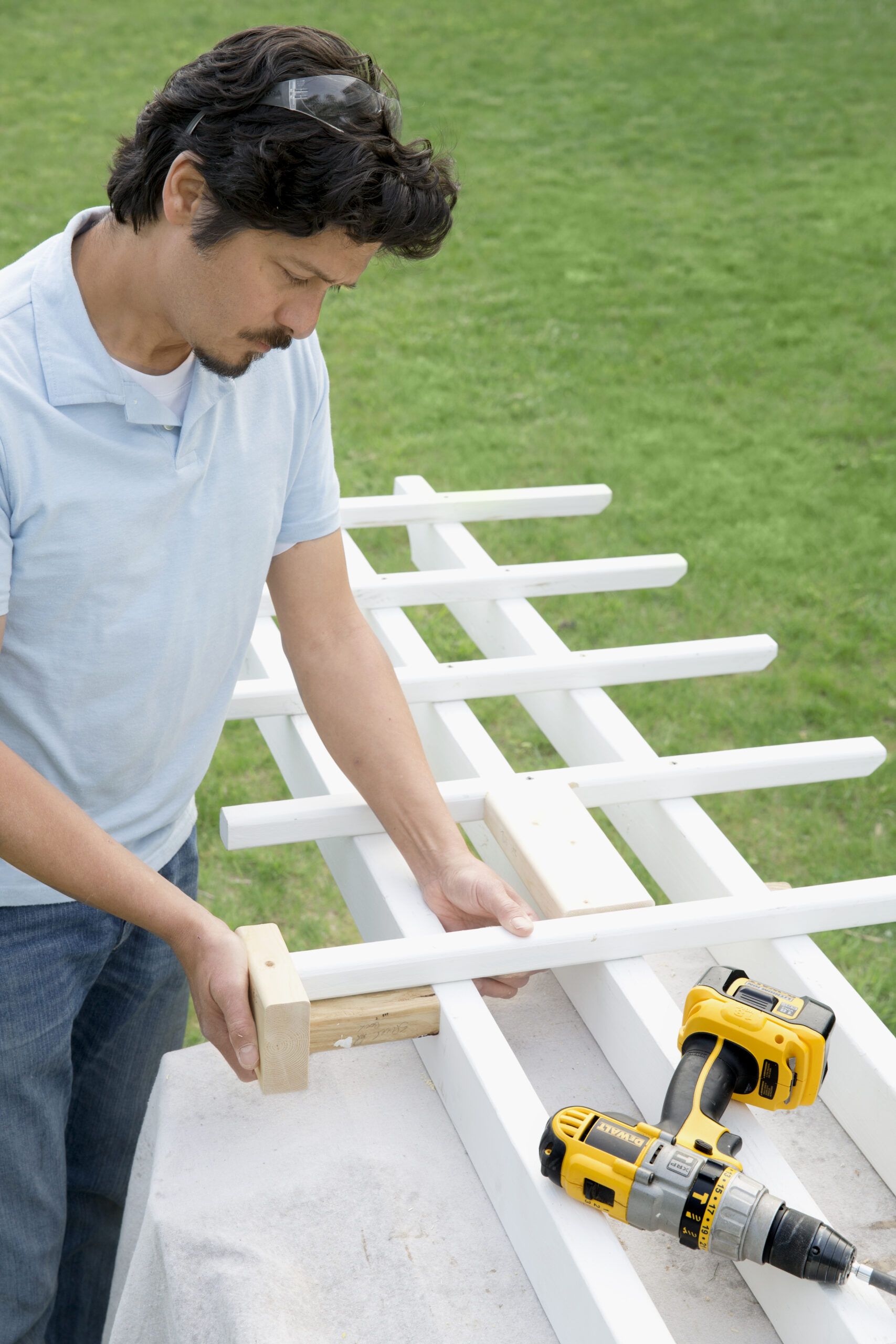
Lay out your purlins across the rafters, starting with one at each end line. Distribute the remaining purlins evenly between the end pieces. Calculate and cut spacer blocks to ensure consistent spacing between purlins. Drill pilot holes and secure each purlin to the rafters with 2-and-1/2-inch deck screws.
Mounting the Pergola
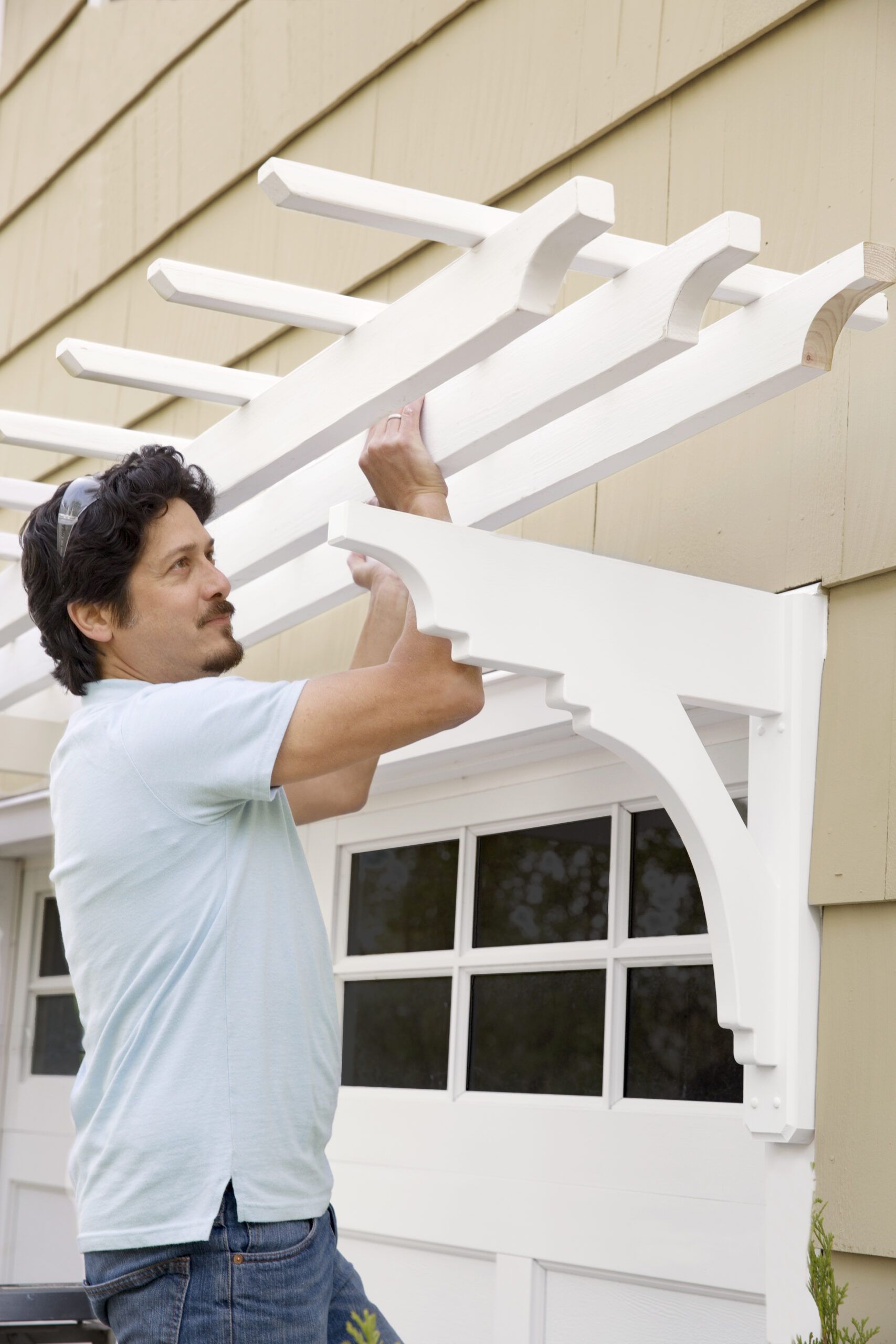
With a helper, carefully lift the assembled pergola onto the installed brackets. Align the center of the front rafter with the middle bracket. Ensure the back of each purlin is at least 1/4-inch from the garage siding. Due to its size and weight, mounting the pergola can be the most challenging part of the installation. Having an extra set of hands is ideal.
Fastening the Pergola
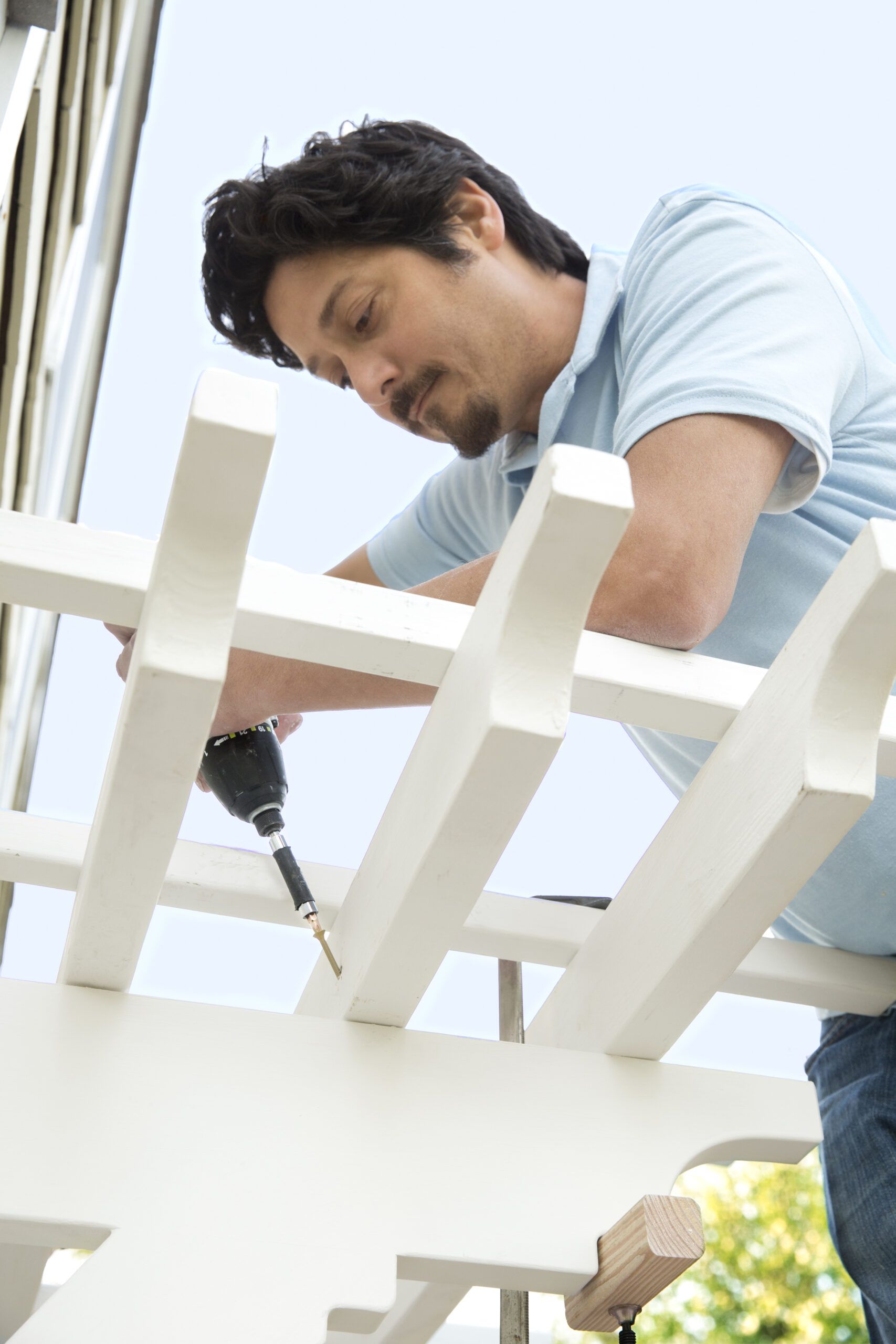
Clamp the pergola in place and drill angled pilot holes through the rafters into each bracket. Secure the pergola to the brackets using 3-and-1/2-inch deck screws.
Enhancing Your Garage Pergola
Once your pergola is installed, add decorative end caps or finials to the rafter ends for a polished look. Consider planting climbing vines or flowers to create a natural, living canopy or installing outdoor lighting for added ambiance and visibility.
